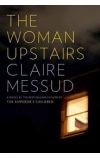
16 Jan 2014 01:51:11
Actually, I was a little put off by this opening, on the old-fashioned grounds that I would prefer to be shown, rather than told of, this woman's anger. It also seemed to clash with what I had come to know of Messud's writing, which in her previous novels has tended towards the precise; the kind of style that routinely gets called "Jamesian". In comparison, this seemed somewhat immature.
But after the explosive opening the book settles down, and we learn that our narrator is called Nora Marie Eldridge, that she is 42 and that until recently she taught third-grade children (eight-year-olds) at a school in Cambridge, Massachusetts. Also that she is quiet, dependable and more or less invisible, as childless unmarried women of that age are expected to be.
And this in itself, you assume for a good many of the novel's 300 pages, is the source of her rage: a reaction to the way society treats women like her. But you also wonder about this rage, because for most of the time, Nora is very happy indeed.
Into her life, five years before that angry opening, had come a family: Reza Shahid, a beautiful young boy of exotic background and faulty English, joins her class. ("You are very funny, in your apples," he says when he sees her spilling a bag of groceries in the supermarket, and it's a cleverly chosen malapropism by Messud; she is good at gauging precise degrees of charm in her dialogue.) And Nora gets to know his mother Sirena and father Skander, a Christian Lebanese academic who has been invited to teach at Harvard. (Messud, who is American but with a melange of nationalities behind her, is also good on how baffled Americans can be by people of foreign descent.)
Sirena – that beguiling name is perhaps a little corny – is Italian, a few years older than Nora, and gorgeous; she provides the greatest magnetic field of the book. She is an artist – you could, cruelly, say "a real one", as opposed to the pretend, or abandoned one Nora is – and she and Nora set up a studio together. Sirena works on an installation called "Wonderland", which she hopes to exhibit in Paris the following year; Nora, thrilled to be invited to share the space and the rent, works on a series of tiny dioramas depicting Virginia Woolf putting rocks in her pockets at Rodmell, Edie Sedgwick, Emily Dickinson, etc. You have to salute Messud for choosing an art idea that shows exactly the threadbare, exhausted and second-rate nature of Nora's imagination. (Although when Nora's class get to see Sirena's completed work and one of them calls it "crappy", I'm not a million miles away from concurring with such an assessment.) Nora falls in love with the family in different ways, all of which are entirely convincing.
This is not, you intuit fairly quickly, a novel rich in incident. I think about four things happen in it, maybe five. At one point it looks as though a fifth (or sixth) thing will happen, but it doesn't. This is brave but smart of Messud, and good for us – we need to read books that are at the very close end of the plausibility spectrum from time to time. (The only tiring part of the book comes in chapter 10 of the second section, when Sirena's installation is described in some depth.) When we finally get to see why Nora was so angry at the beginning, it's an extraordinary betrayal that is also a clever surprise. So this is, after all, a very grown-up novel, and because it's published by Virago it doesn't have one of those cliched covers that are foisted on female authors these days.

